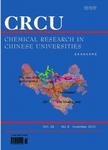Establishment of a Tumor-bearing Mouse Model Stably Expressing EGFP Labeled Human MUC1 VNTRs
Establishment of a Tumor-bearing Mouse Model Stably Expressing EGFP Labeled Human MUC1 VNTRs作者机构:Vaccine Research Center College of Life Science Jilin University Changchun 130012 P R. China
出 版 物:《Chemical Research in Chinese Universities》 (高等学校化学研究(英文版))
年 卷 期:2008年第24卷第4期
页 面:505-510页
核心收录:
学科分类:1002[医学-临床医学] 0703[理学-化学] 100214[医学-肿瘤学] 10[医学]
主 题:MUCI VNTR Tumor antigen Tumor model Tumor vaccine
摘 要:Two eukaryotic vectors expressing 9 tandem repeats of human MUCI(VNTR), VR1012-VNTR, and pEGFP-VNTR, were constructed by cloning VNTR gene into VR1012 and pEGFP, respectively. VNTR stably expressing murine Lewis lung carcinoma(LLC) cell line(VNTR^+ LLC) was established by Lipofectamine-mediated transfection of pEGFP-VNTR into LLC cells. The EGFP expression was observed under a fluorescent microscope and VNTR expression in VNTR^+ LLC cells was confirmed by means of Western blotting. A syngenic graft tumor model was generated by subcutaneous injection of VNTR^+ LLC cells into C57/BL6 mice and tumor size increased rapidly with time and in a cell qumber dependent manner. VNTR mRNA expression in the tumor formed was confirmed by RT-PCR. After the third immunization mice were challenged subcutaneously with 5×10^5 VNTR^+ LLC cells, a significant reduction of subcutaneous tumor growth was observed in the groups immunized with VNTR plasmid DNA compared with that in the groups immunized with the vector DNA alone. Thus, the suppression of subcutaneous tumor was antigen-specific. This model is useful for the development of tumor vaccines targeting MUCI VNTRs.



